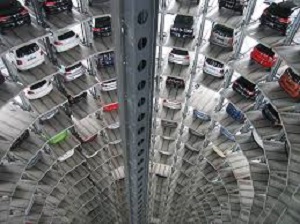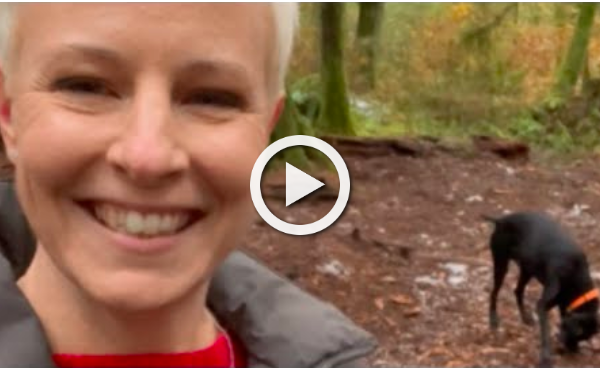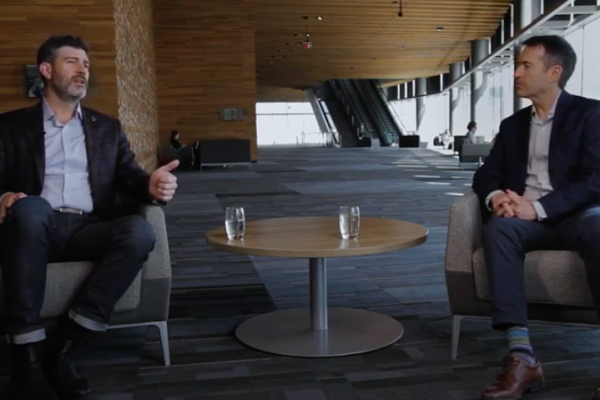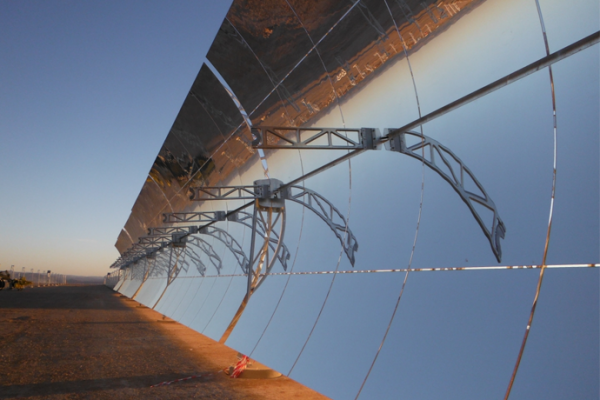By Gordon Feller, Consultant – Cisco Systems & Founder – Meeting of the Minds
Where and how are cities harnessing the power of new digital tools to transform how they organize their systems? Or how they deliver their services in new and better ways to residents and visitors? Can cities create a prosperous environment for small and larger enterprises?
In the mid-1990s, after Bill Clinton assumed his eight year Presidency, he appointed a new World Bank President. James Wolfensohn focused part of his term on helping cities to make big changes happen, especially in the Global South. He pulled a team together to work on finding ways that could accelerate the progress for cities and bring innovative solutions to bear on the full range of problems facing cities: urban energy, urban water, urban transport, urban education, urban health care. A group was formed inside the World Bank, with a focus on ‘The Urban Age’. In the year 2000, the Urban Age Institute became an independent non-profit organization. One of the best of Urban Age’s corporate partners was Cisco Systems.
Another early partner was Siemens, along with a variety of leading corporates and leading foundations. Working with Urban Age, they saw the world’s rapid urbanization and they sought out technologies which enabled a positive transition for cities around the globe.
In 2006, the Urban Age began working with the Canadian government, the German government, and many cities around the world. What was born was Meeting of the Minds to ensure that the leaders innovating with the very best emerging tools — urban technology, connected solutions, and sustainability – could jointly build a common platform.
In 2009 or thereabouts, Cisco’s executive team invited me to work on these problems, from a base inside the headquarters in Silicon Valley. I took on the assignment of helping Cisco, via teams around the world, address this challenge of getting cities aligned with the data generated by a myriad of assets (buses, taxis, street light, etc.) – so that the city leaders could fully utilize what was readily available to them. Over time, cities were provided with a new way to accelerate their transition to a more equitable, prosperous, environmentally sustainable future.
For many of the smartest and best-led cities the focus has been on infrastructure, which is a strong tie-in to what we’ll be talking about on April 4th and 5th at GLOBE Capital. GLOBE has always been focused on infrastructure problems facing cities and businesses, including the vital digital infrastructures like wireless networks that make so much else possible.
The 3 Stages of the Internet
Think about the transformation of technology in the last 10 years, especially the big changes in how we communicate. The Internet’s first age was all about basics like email, enabling better communication and changing some of the ways we do things. The second stage of the internet was e-commerce and buying things online instead of in person, and then, the third stage – which we’re in now – includes the immersive social media that we’re surrounding ourselves in 24/7/365 and it includes the Internet of Things.
We can now connect with people and project teams we’ve never actually met. Going beyond just better and more efficient communication, we’re surrounded by both e-commerce and by the commercial development of the Internet as a tool for transforming how we live. This 3rd stage of the internet is being characterized by the Internet of Things where all of the objects in the world – city streets, parking meters, traffic lights, street lights, doors, windows, etc. – are all going to be emitting data about their conditions.
Data Is The New Oil
The priority is gathering data that helps generate insights that can make traffic flow more smoothly, and make the parking experience both better and more affordable. Embedding technology into infrastructure systems, like transit, means that technology is going to have an impact on the 99 percent of the world that hasn’t yet been connected to the Internet. New opportunities come with new insights; the data itself doesn’t provide those insights. The insights are derived by analyzing and interpreting the flow of data, and preferably doing so in real-time. This is precisely what allows a smart city to embrace smart infrastructure — receiving data inputs and/or transmitting data about the conditions in this very moment. For example, if you don’t have a way of using real-time data to generate insight on-the-fly, then it’s not very useful to the driver who’s looking for an open and affordable parking space.
Hundreds, maybe even thousands of companies, are busy building the analytical tools that enable big data to become little insights, each of which are (ideally) actionable. The cities in North America starting to make headway along these lines are early leaders. They are the cities investing in the big data analytics to make those little insights available to whoever inside the city needs to take an action.
The Road to Becoming a Smart City
On the road to this smart-city future there are many big challenges, however. Much of the US city infrastructure currently in place was built 30 or more years ago. How do you take digital intelligence and overlay it on top of a city’s aging physical system? A convergence of digital with physical is imperative, since this is what makes it possible to manage infrastructure in ways that reduce energy consumption and decrease overall energy demand.
Expensive physical assets, into which we’ve invested trillions of our treasure, do not change without a fight. How do existing structures — buildings, roadways, pipes (water, sewage, gas, oil), bridges, tunnels — become a hyper-intelligent, more responsive, sustainable infrastructure? One method is by using digital sensor networks placed on top of old existing systems. This seems to make more sense than ripping out these degraded physical systems.
Achieving important goals – such as reducing climate-changing gas emissions — means reducing energy consumption and softening the natural system impact of human activity. In essence, we must re-engineer our collective metabolism. This becomes a bit easier when connected things transmit data – and due to their connectivity these smart-objects have the potential to effect change. When data is analyzed in real time, it then becomes possible to change the business process, whatever it might be. It could be commuting from point A to point B; finding a parking space; lights turning on and off, as needed – all of these systems can be made more responsive to real world conditions.
Canadian-Style Public + Private Sector Partnerships
There are an abundance of innovative solutions emerging from the private sector. Public sector agencies – often lacking technology backgrounds – do struggle to figure out which technologies are the best for their city. Unfortunately, this often results in a state of confusion, especially with such an abundance of choices.
Public/private partnerships, Canadian style, will inevitably become much more prevalent around the world. Canada’s certainly been a pioneer by developing innovative approaches to public-private partnership.
There are many companies who offer smart streetlights and many other companies providing smart parking meters. The question is, how best to help the decision makers in these cities make the most appropriate choices? Sometimes public agencies will have to partner with the private sector; sometimes they need to turn to their citizens; and sometimes they need look closely at what other cities are doing and learn from their lessons.
The good news is that we can and will transform the built environment. There are always going to be unknowns, and we’ll find some unintended consequences that we didn’t expect. Consider the situation facing my home city of San Francisco. One of the unintended consequences of the economy’s digital transformation is that living in this city has become much less affordable than it should be. A shift has occurred, rending any semblance of economic balance, accentuating big divides between the haves and the have-nots. Those who historically lived in the downtown are now in conflict with young, highly-paid technology workers who want to live downtown — even if it means crowding out the people who have historically been there. This is same situation in other cities, like Toronto and Vancouver. An unintended, negative consequence for all the people suffering through resultant dislocations.
The Bankers’ Lens
What’s holding us back from making all the changes as fast as they’re needed? How will these changes be financed? GLOBE Capital in Toronto on April 4th and 5th will address this head on. We’ll debate how to finance the innovation economy in ways that enable the deployment of transformational digital tools — and in ways that make all lives better.
In this domain the visionary bankers are key. Bankers will always look at new opportunities through a banker’s lens. They do want to know the risks, and to understand the impacts: What will generate new revenue? What will reduce existing costs? Offering solutions that reduce costs or increase revenue or create new revenue models – this is key. Without these, the banks won’t step up and participate in financing smarter urban infrastructure.
I spend much of my time advising investors, and the very first priority is to find the inefficiencies. Consider Uber, as an example: take on the highly inefficient taxi industry, build a platform that allows the car owner to provide their own asset, thus making it possible for Uber to not own a single vehicle while being the largest provider of taxi services in the world. The same with Airbnb – as the largest hotelier in the world they sell a million room nights every day, but don’t own any hotel. These companies have created ways to engage asset owner who are willing to make their asset available for a fee. Technology enabled these transactions between asset owners and short-term buyers who had a need. Look first to the inefficient systems that the economy has slowly built, over decades or centuries, and change those systems very fast.
Can digital innovation disrupt those businesses in a ways that don’t create economic dislocation for those who depend on incomes built on the older models? Uber creates a lot of disruption, and not all of it is ethical or sustainable. Impact-minded investors increasingly want to see responsible investment opportunities created by emerging technologies.
The challenges ahead are fourfold: keeping the new economy people-centered; minimizing potential negative impacts; bringing wealth-generation opportunities to all classes of people; and, reducing the environmental impacts of human activity.
We are in the middle of an historic time as we experience a big, fundamental transition to a new technology-based economy.




